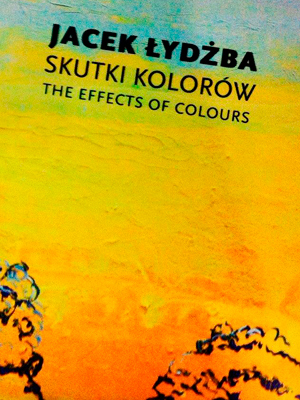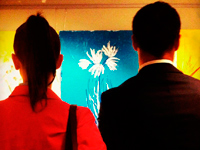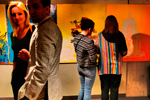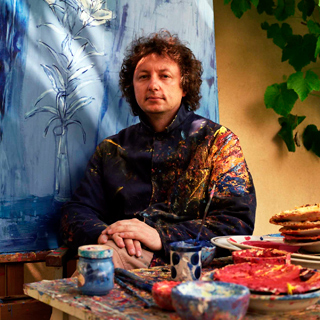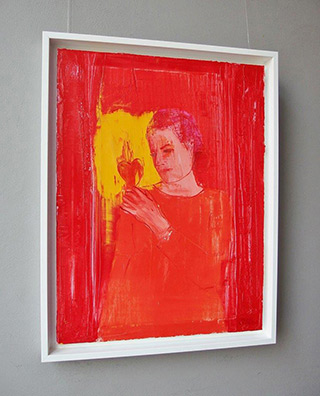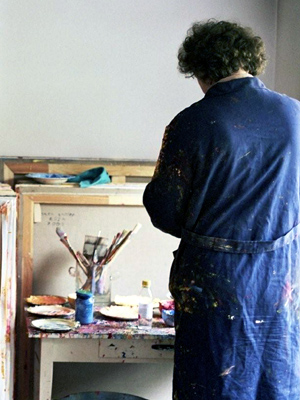The effects of colours
Stendhal syndrome is a psychosomatic disorder which causes rapid dizziness, heartbeat, confusion or hallucinations when a sensitive individual is exposed to works of art and architecture accumulated in a relatively small space.
How is it possible that a particular combination of colours can reduce us to tears or make us laugh, wow us or suddenly make us melancholic? I can imagine man as a map with numerous buttons hidden under his skin. There are talented artists who can intuitively find and press these, just like you press piano keys, to make music flow through the audience. We have the same feeling while looking at certain paintings: this wave travelling up from our toes, taking control over our bodies, until it reaches its apogee and is released in the form of tears, dizziness, laughter or compulsive skin picking. Such paintings are like an extremely suggestive dream: we are going back to reality with altered optics, with filters on our eyes, and our heads full of colourful bits from a kaleidoscope. The moment of interaction between the audience and the painting is like a collision of hadrons, the atomic exchange of energy. What will the results of such a beautiful disaster be? What will the effects of these colours be?
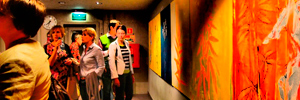
Jacek Łydżba’s paintings are mighty magnets, attracting hues, emotions and colour temperatures. Upon their arrival, they decorate the whole world, just like a beautiful and lively child, who suddenly appears at the party, barefooted and wearing fluffy pyjamas, and renders all the guest mesmerised, unable to take their eyes off the infant. I picture these paintings as powerful motorway hoardings; I see people pulling over to look at them: they park their cars in front of these paintings, forming endless traffic jams, and finally end up camping in the neighbouring wheat and corn fields. In no time small businesses begins to thrive there, with sellers offering mineral water and salt sticks, while the paintings are designated holy. Anyway, there are people swarming around them, since they are hard to abandon as everyone would like to stay close to them and possess them as private suns in intimate solar systems, as elements of individual geometry.
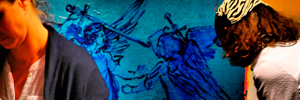
It would be so much more interesting if man were a transparent vessel that would fill itself with colour when looking at paintings. We would know more about our sensitivity, our temperature, and we could pair up by colour. This is exactly how we would furnish our flats: all in blue, all in yellow. Artists would serve long queues of customers, just like butchers do: ‘Here you go, top-quality goods! Ultramarine! Cadmium yellow! Indigo! Priceless!’ Instead of methamphetamine, great chemists would boil colours, which would be smuggled on a grand scale – running a river from Pakistan, through the Congo, to North and South America. This is actually happening now with those paintings that stir the strongest emotions, right? And there already exists a spiritual and physiological love for colours, which is made realistic now and then.

These paintings, however, contain something else: a joyful play, an intriguing tension – dignity and symbolic depth versus playful lightness, tradition versus modernity, the literality of a sign and the hard fact of figurativeness versus the dream of free abstraction. Both paths, vectors wrestle with and pervade one another, creating a unique energy that impacts the audience. Jacek Łydżba is good friends with Dürer and Warhol, combining the sharp cuts and precision of copperplate engraving with poster poetry and a pop art carnival. Such a contrasting mutual illumination of the starting point and the point of view reveals critical potential, but, instead of negation, the artist opts for polyphony, and, instead of dissonance, balance that is full of tension, vitality and dynamics – even if the balance only stems from the metaphysics of colour.


